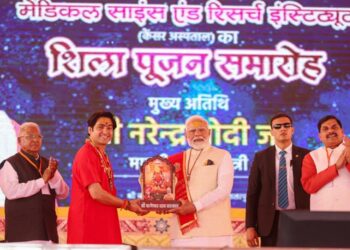New Delhi: The success of Chandrayaan-3 has pushed India into the front row of space-faring nations, which means the country will now also have a say in the exploration of outer space and use of pace resources, Former ISRO Chairman K Kasturirangan told NDTV.
He said that the “high science, low cost” approach of ISRO has helped design the nation’s space programmes in a cost-effective, but innovative ways. He also said that developing countries too must invest in space programmes.
K Kasturirangan, during whose tenure as ISRO chairman the moon missions were planned, said India now has a seat at the “high-table” in deciding matters related to space exploration in the 21st century.
“International regimes in the past have shut others from space pursuits, particularly with regard to adopting emerging technologies and in that context, India has to invest in space exploration.”
“If a nation is looking at taking up technologies that are opening up new frontiers, the problem is some nations – that have already mastered it – don’t want the other nations to join that club. This has happened in the nuclear energy and weapons club too. If you postpone such programmes for too long thinking you will do it later, the international regime will manipulate the system so much that it will be difficult for you to enter, because it is seen as their domain. India is making sure it doesn’t have to face these hindrances. If there is a new technology, and new area of exploration and investigation – be it the earth, or ocean or space – we must make sure we showcase our abilities and be counted among the front ranking nations,” he added.
Mr Kasturirangan said countries with the right kind of technology, necessary science background and financial resources will become part of this great journey. “India cannot be left behind in the area of space which is becoming key to the future,” he said.
“The success of Chandrayaan-3 is particularly important because this is the first time the country has demonstrated that it can explore parts of another celestial body – in terms of physical and chemical environment and other parameters,” Mr Kasturirangan added.
“This is a very important capability. One is the science part of it, the other is the technology part of it. And the other is the conduct of the total mission, be it the orbit, the rocket, the ability of the lander and rover among others. This represents a totality of ability to explore a planetary object. India is doing everything in its capability to show it has the necessary credentials as some other countries including US, China, Russia,” he said.
He said “where we have landed on the moon is also significant, as it is a location with a promise of water, and water is a very critical element.” A 2021 PWC report appraised the lunar economy at a promising $170 billion with the potential of exponential growth, focussing on transportation, lunar data, and in situ resources utilisation.
“We have signed the Artemis Accords (a practical set of principles to guide space exploration cooperation among nations, including those participating in NASA’s Artemis program) that gives India a position among a committee of nations of using lunar platforms for other explorations. We have become part of the high table with Chandrayaan-3, and are among the handful of nations who have successfully demonstrated that ability,” he said.
Mr Kasturirangan said apart from welfare schemes, developing countries must invest in space and science programmes too. “One can look at this from two sides – you can invest in a welfare programme and still be finding solutions for it 75 years later. The money we are currently spending on space is not anywhere close to what many of the other countries are spendin. The space programmes we do are really cost-effective. So, the cost of building Chandrayaan-3 is nothing compared to what other countries have spent in similar missions. These kinds of space programmes are affordable, and in no way do they come in the way of our developmental programmes,” he said.







 Finance
Finance







